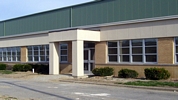The best treatment for breast cancer can be provided if the breast cancer type is known. Therefore knowing the different breast cancer types is important. After breast cancer diagnosis, the doctor may work to know the specifics of the tumor. The breast cancer type can be determined using a tissue sample from a breast biopsy or the tumor if surgery has been already performed. The treatment for breast cancer and breast cancer symptoms will depend on the type.
The following information is needed to determine breast cancer type:
Invasive or noninvasive cancer?
Knowing whether the cancer is invasive or noninvasive helps the doctor to determine if the cancer has spread further than the breast. The appropriate treatments and the risk for further development of cancer are also determined.
1. Noninvasive breast cancer: Noninvasive or in situ breast cancer refers to a type of cancer where the cells have remained within the place of origin and have not spread to tissues of the breast near the duct or lobule. The common type of noninvasive breast cancer is ductal cancer in situ. This cancer is confined to the lining of the milk ducts. The cells have not spread to the surrounding tissue of the breast.
2. Invasive breast cancer: Invasive breast cancers invade the surrounding tissues and spread outside the membrane that lines a duct or lobule. The caner cells thus travel to other regions of the body, including lymph nodes. A stage of I, II, III, or IV is indicative of invasive breast cancer.
Cancer began at which part of the breast?
The severity of breast cancer depends on the nature of tissue affected. It also indicates how the cancer will progress. The following are some areas where breast cancer develops:
1. Milk ducts: The most common form of Breast Cancer Type is ductal carcinoma. It affects the lining of the milk duct present within the breast. The ducts are the carriers of breast milk from the lobules to the nipple.
2. Milk-producing lobules: Lobular carcinoma originates in the breast lobules. This is the site of milk production. The lobules are connected to the ducts.
3. Connective tissues: Breast cancer rarely originates in the connective tissue that comprises of muscles, fats, and blood vessels. Cancer that develops in the connective tissue is known as sarcoma. Phyllodes tumor and angiosarcoma are two types of carcinomas that can develop in the breast.
What is the appearance of cancer cells?
The following factors are taken into consideration when a sample of the cancer is place under a microscope.
1. Cells with novel appearances: Invasive ductal carcinoma cells take on unique and novel appearances when viewed under a microscope.
2. Difference between cancer cells and normal ones: Cancer grade is decided based on the difference between cancer cells and normal ones. This will also affect breast cancer symptoms.



